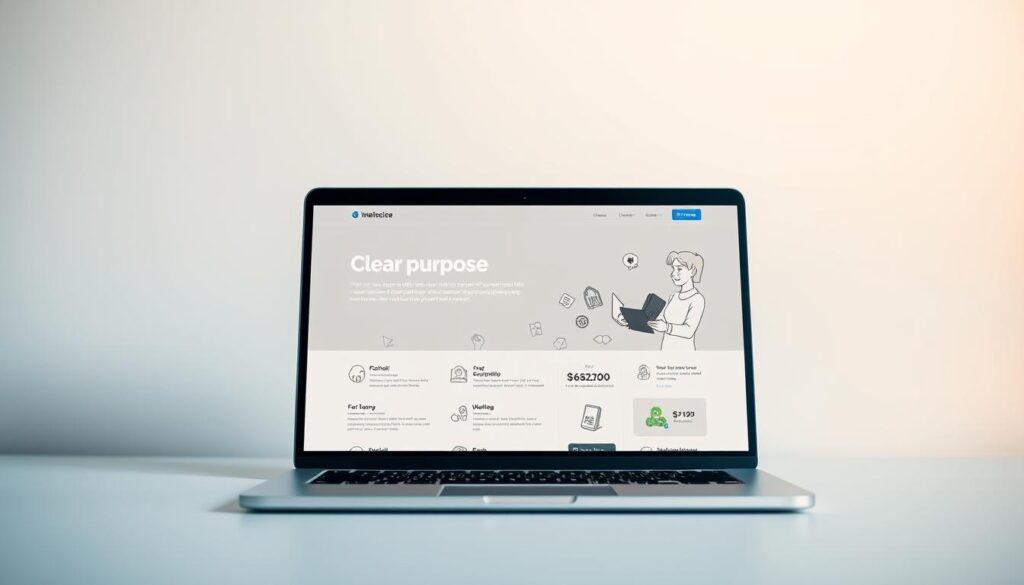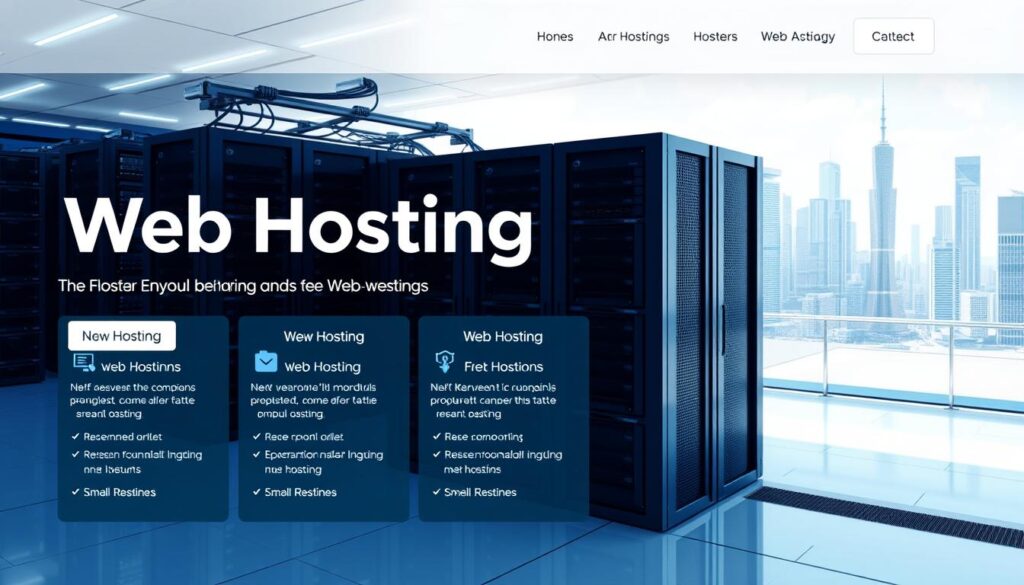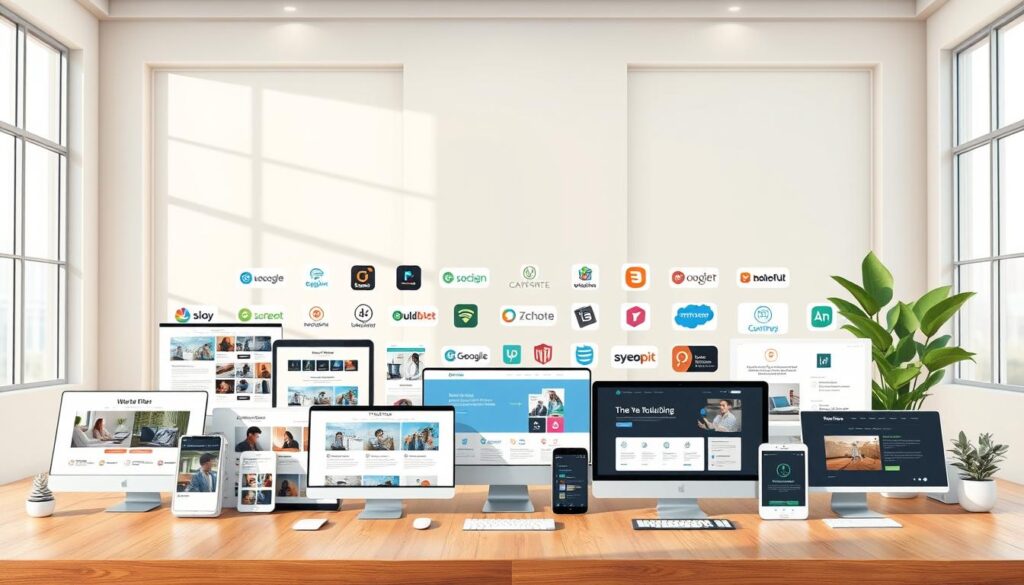Have you ever gotten excited about sharing your ideas online? Creating your own website can be a thrilling journey. With nearly *5 billion* people online, having a website is necessary, not just a luxury. It’s crucial for those wanting to make their mark in the digital world. As you start, remember you’re not alone. Many have succeeded in finding joy and connection online. This guide will help you make your website live, showing you it’s entirely possible.
Let your creativity flow as you build an online space. This can connect with others and win over hearts.
Key Takeaways
- Starting a website is key to building an online presence.
- Nearly *5 billion* internet users mean big chances.
- Costs differ based on website type and chosen services.
- A strong domain name is important for your brand.
- Responsive design is a must for all devices.
- Website builders or open-source solutions are great for beginners.
- Keep your site updated and secure to last longer.
Understanding the Importance of Having a Website
Nowadays, having a website is crucial. It’s key for small businesses to grow and boost their sales. About 76% of people check a business’s online site before visiting in person. This shows how vital a good online image is. A great website acts like a business card that’s always available. It displays your products and services and helps build trust with potential buyers.
Having a website means you can reach customers all over the world. It lets businesses break free from local limits and offer 24/7 shopping through eCommerce sites. With platforms like Shopify, BigCommerce, and Magento, setting up an online store is easier. You don’t need a lot of tech knowledge to start selling online.
Getting your website seen by more people is critical. With search engine optimization, or SEO, you can boost your site’s visibility and draw in more visitors. A strong website design can also help capture leads, increasing the chances of turning visitors into customers.
Updating your website regularly keeps customers coming back. It helps generate more leads and business throughout the year. A website also makes your business seem more reputable. In fact, 84% of people think businesses with websites are more trustworthy. In a competitive market, a website is not just a marketing tool but a must-have for growth.
Decide on the Purpose of Your Website
Knowing the purpose of your website is key. It guides your choices in design, content, and how the site works. By being clear on this, you can meet your business goals better.
Common Functions for Business Websites
Websites can do different things, depending on what the business needs. Some common roles include:
- E-commerce capabilities, letting you sell things directly online.
- Information dissemination, which is about sharing info on what you offer.
- Lead generation, where you get info from visitors to help future business.
- Thought leadership through blogging, offering insights that show you’re a leader in your field.
Picking the right functions makes your website more user-friendly for the people you want to reach.
Defining Your Website Goals
Having clear and doable goals for your site brings focus. For example, you may want to:
- Increase how many people visit your site by a certain percentage.
- Hit a certain amount of money made in a set time.
- Get more people to respond to calls-to-action on your site.
A good strategy holds you accountable and keeps your site on track. This focus is big for your success online.

Choosing the Right Domain Name
Your domain name is key to your online presence. It’s crucial to choose one that reflects your brand well. Having the right domain name helps people remember you and improves your visibility online.
Best Practices for Domain Names
Keep these tips in mind when picking a domain name:
- Choose a name shorter than 15 characters to make it easy to remember.
- Go for popular extensions, like .com which 70% of sites use.
- Stay away from hyphens and numbers to reduce mistakes and make it phone-friendly.
- Include keywords that tell search engines what your website is about.
- Use domain name generators for creative and catchy ideas.
Registering Your Domain
After picking your domain name, the next step is to register it. Check if it’s available with domain registrars like GoDaddy or Namecheap. If it’s taken, look at other extensions or buy a used domain through auction. Older domains might boost your SEO because of their history.
Ordinary .com domains cost about $10 to $20 a year. But, premium ones can be much pricier, due to popular keywords. Make sure your registrar offers WHOIS privacy to protect your details and auto-renewal to keep your domain safe.
| Domain Extension | Usage | Typical Cost |
|---|---|---|
| .com | General use | $10 – $20 |
| .co | Company and commerce | $15 – $30 |
| .org | Non-profits | $10 – $20 |
| .info | Informational sites | $10 – $20 |
| .net | Technical sites | $10 – $20 |
| gTLDs () | Specialized or trendy | $15 – $50 |

Start a Website by Selecting a Hosting Provider
Choosing the right web hosting provider is key to your website’s success. You’ll find many hosting types to pick from, so it’s important to choose one that fits your needs. Knowing about the different hosting types and what to look for in a plan will help your site run smoothly.
Types of Hosting Explained
Here are the main types of hosting you’ll come across:
- Shared Hosting: This is great for small sites and doesn’t cost much, starting at $2 to $5 a month. It’s best for websites that have up to 5,000 pages and get between 10,000 and 400,000 visitors a month.
- VPS Hosting: This is good for bigger sites, offering better performance. Managed plans start at $30 to $50 a month, but you can find unmanaged ones from just $2 a month.
- Dedicated Hosting: If your site gets a lot of traffic, dedicated hosting is a good choice. Managed services start at $80 a month, with unmanaged ones starting at $30.
- Cloud Hosting: This option is great for websites that are growing. It uses multiple servers to keep things running smoothly. Prices range from $30 to $100 a month.
What to Look for in a Hosting Plan
Keep these points in mind when looking at hosting plans:
| Feature | Importance |
|---|---|
| Uptime Guarantee | Find plans with a 99.99% uptime guarantee to keep your site up and running. |
| Bandwidth | Go for unmetered or unlimited bandwidth to manage sudden traffic increases. |
| Storage Space | Choose at least 10GB of storage if your site has a lot of content, like a blog or membership site. |
| Technical Support | It’s important to have reliable support for help and advice. |
| Security Features | Opt for plans with strong security to keep your site safe. |

Choosing the Best Website Building Solution
Picking the right way to build your website is very important. You should know about website builders and custom development. These options help you make a good choice based on what you need and want. Think about your skills, how much money you can spend, and what you want your website to do.
Website Builders vs. Custom Development
Website builders like Wix and Squarespace make it easy to create your own website. You don’t need to know a lot about coding. These platforms are popular because they are easy to use and have many features. On the other hand, custom development, like with WordPress, gives you more control. It’s good if you have technical skills. Think about cost, how much your website can grow, and the support you’ll get with each option.
Popular Website Building Platforms
| Website Builder | Rating | Price per Month | Key Features |
|---|---|---|---|
| Wix | 4.5 | Free & $17 to $159 | AI site generator, over 900 templates |
| Duda | 4.0 | Not free | Strong editor, powerful analytics |
| Squarespace | 4.0 | $16 to $52 | Beautiful designs, 24/7 chat support |
| Shopify | 4.4 | $29 to $299 | 100+ payment options, third-party app integration |
| Hostinger | 4.0 | $3.59 (3 months free) | AI-powered tools, simple setup |
| Bluehost | 4.0 | $2.95 | Ease into WordPress CMS |
| GoDaddy | 4.0 | $9.99 | Marketing and SEO tools |
The choice between website builders and custom development depends on your needs. If you have a simple project, a website builder might be enough. But for bigger plans, custom development could offer more options and growth.

Planning Your Website Structure
Starting a successful website means planning its structure well. A good layout is key for a great user experience. It helps visitors find what they need easily. Make sure your site has the basic pages it needs. A user-friendly design invites visitors to stay and look around. Knowing the types of structures can guide you in organizing your site.
Essential Pages for Every Website
There are some pages every website really needs to talk effectively to its visitors. The most important ones are:
- Home Page
- About Us Page
- Products/Services Page
- Contact Page
These pages give clear info, helping users understand your purpose. A well-planned structure lets visitors easily browse these key pages. This reduces the chance of them leaving your site.
Creating a User-Friendly Navigation
Having easy-to-use navigation is crucial for a good user experience. A well-thought-out menu lets visitors smoothly go through your site. Here are some things to keep in mind for good navigation:
- Arrange your pages in a clear order, from general to specific.
- Use breadcrumb links so users know where they are on your site.
- Keep the navigation the same on all pages to avoid confusion.
- Link related pages together to help with navigation and SEO.
Checking your site regularly can help you spot and fix issues like dead links. Making sure your site works well on phones is also important. This keeps the navigation easy for everyone, no matter the device.

Designing Your Website
Creating a website is key to making your mark online. A good mix of nice themes and colors sets up a great user experience. It’s crucial to pick themes that look good and make the site easy to use. Colors should be easy to read and make people feel the way you want.
Choosing Themes and Color Schemes
Your website’s design greatly influences how people view your brand. About 94% of first impressions are based on design, so it’s vital to look professional. When picking themes, think about these points:
- Match your brand’s identity
- Ensure it’s easy to use and access
- Organize visuals to help users navigate
- Keep images consistent for better brand recognition
It’s key to have a design that works on all devices, especially for mobile users. Since 61% of them might not come back if your site has issues, make mobile a priority.
Optimizing for Mobile Devices
With more people using mobiles, your website must work well on them. While 70% of small businesses have websites, only 56% are mobile-friendly. Going mobile-friendly can boost sales and user happiness.
To make your site great on mobiles, try these tips:
- Choose a layout that adjusts to screen sizes
- Make your site load fast, ideally in 2 seconds, to keep visitors
- Use clear calls to action; testing them can really help
- Use heat mapping to understand what users do on your site

Putting effort into a website that looks and works well is crucial for your brand’s image. Since 75% of people judge a business by its web design, don’t ignore its importance.
Creating Engaging Content
Having high-quality content is key for any website that wants to be successful. It grabs visitors’ attention and keeps them coming back. You should mix text, pictures, videos, audio, and infographics. This mix makes sure people stay interested and stick around longer.
Importance of Quality Content
Content that connects with your audience helps you become a leader in your field. Tools like One2Target offer insights about who your audience is. This means you can make content that’s just right for them. Remember, people usually scan, not read every word. So, short paragraphs and clear subheadings can help a lot.
SEO Best Practices for Content Creation
Using SEO tricks is very important to get your content seen more. Putting keywords in the right spots helps with search engine ranks. Keep your content fresh to stay top-of-mind for your visitors. And, visual content like pictures gets remembered more than words.
Also, clear calls to action make people want to do something when they visit. Making your content easy to get through and error-free makes for a better visit. This helps keep your audience coming back.

Optimizing Your Website for Search Engines
Reaching your target audience means making your website SEO-friendly. This needs a smart plan for using keywords in your content. By adding relevant keywords to your text, URLs, and metatags, you’re more likely to show up in search results. But, be careful not to use too many keywords. This is called keyword stuffing and it can hurt your SEO score.
Using Keywords Effectively
Using keywords right attracts more visitors and helps search engines understand your content better. Put your main keyword early in your text, within the first 100 to 150 words. Also, make sure your meta titles and descriptions are clear. This could lead to more clicks. It’s important to match your content with what users are searching for. Focus on common keywords your audience likes.
Building Backlinks and Improving Authority
Building backlinks is also key for your website’s authority. Sites with lots of backlinks tell search engines their content is worth reading. Try reaching out and partnering with respected websites to get these backlinks. Remember, taking care of your SEO is an ongoing process. You need to keep checking and adjusting your strategy to keep your site visible and trusted.









